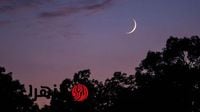As the end of Ramadan 2025 approaches, the search intensifies for the date of the Shawwal crescent sighting and Eid al-Fitr celebrations become a topic of keen interest among Muslims worldwide. For many, this night, known as Laylat al-Shak, is filled with anticipation as it determines whether Ramadan will conclude after 29 or 30 days. This year, Laylat al-Shak falls on Saturday evening, March 29, 2025.
During this pivotal night, institutions like the Egyptian Dar al-Iftaa will conduct their observances to confirm the sighting of the Shawwal crescent, which is essential for determining the start of Eid al-Fitr. Preliminary astronomical calculations suggest that the first day of Eid al-Fitr 2025 will be Sunday, March 30, if the crescent is sighted on the evening of March 29. If sighting is not feasible, then Ramadan will conclude after a full 30 days, pushing Eid celebrations to Monday, April 1.
The official Eid al-Fitr holiday in Egypt will commence on Saturday, March 29, lasting until Tuesday, April 2. Employees are expected to return to work on Wednesday, April 3, assuming Eid falls on Sunday. If Eid is confirmed to be on Monday, the holiday will extend to April 3, allowing families to enjoy an extended celebration.
In terms of preparations, Muslim communities are gearing up for the festival by buying or preparing new clothes as well as baking traditional sweets like cookies and cakes, marking a cheerful end to the month of fasting.
However, the crescent sighting possibilities vary significantly across regions. In Oman, for instance, the International Astronomy Center has foreseen that the Shawwal crescent will not be visible on the evening of March 29, due to various astronomical factors. This includes the moon setting before sunset or the conjunction occurring after sunset, thus making sightings impossible with the naked eye or through telescopes.
The International Astronomy Center has emphasized that the likelihood of seeing the crescent in Oman and other neighboring areas on March 29 is significantly compromised due to these conditions. Stating, “It's expected that countries relying on authentic Sharia sighting will complete Ramadan for a full 30 days, with Eid al-Fitr beginning on Monday, March 31, 2025.”
Notably, March 29 marks a partial solar eclipse observable from the Maghreb region, coinciding with the time of the crescent conjunction at 08:41 PM GMT. This celestial event is expected to provide further evidence against the visibility of the crescent that evening.
According to the map released by the International Astronomy Center, the red-shaded regions indicate areas where the sighting will be impossible due to the moon's setting before sunset. Non-red regions also indicate difficulties in sighting by either the naked eye or using telescopes.
Nevertheless, some countries might declare Eid on March 30, relying on sightings that might be considered valid even if astronomical reports suggest otherwise. Various Islamic authorities and communities in different nations may adopt different interpretations regarding the start of the month based on their religious and astronomical guidelines.
As Ramadan draws to a close, many families engage in the joyous traditions typical of Eid al-Fitr. This festive occasion not only celebrates the conclusion of fasting but also symbolizes sharing and unity within the community. While Egypt and Oman prepare for the holiday, observers widely anticipate clarity on the official announcements from religious authorities about the exact dates for Eid celebrations.
In summary, with Ramadan ending and Eid al-Fitr looming on the horizon, Muslims worldwide are filled with hope and excitement about the month Y will yield, whether it be full of celebrations on Sunday, March 30, or a slight postponement until Monday, April 1. The anticipation of Laylat al-Shak serves as a reminder of the unity shared among the global Muslim community, awaiting confirmation on what will be a moment of profound significance.





